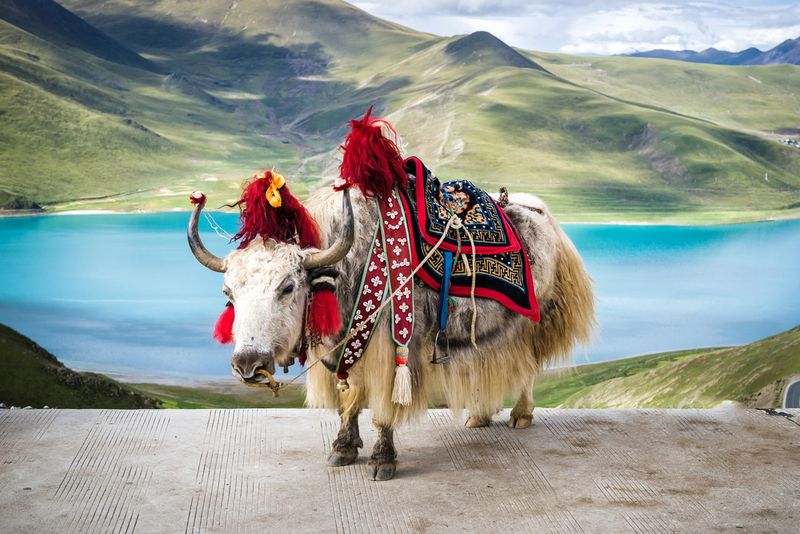The Tibetan Plateau is one of the highest inhabited regions on Earth, and while life at the so-called "Roof of the World" may be harsh, new data reveals that the area once enjoyed a warmer spell, giving rise to the powerful Tibetan Empire. However, despite exerting huge influence over Asian geopolitics between the seventh and ninth centuries CE, the empire fell apart over a period of about 60 years, as colder temperatures and severe drought triggered a catastrophic decline in agricultural resources throughout the region.
To learn more about how climate change influenced the rise and fall of the Tibetan Empire, the authors of a new study analyzed carbonates and oxygen isotopes in layers of sediment collected from Lake Jiang Co on the central Tibetan Plateau. Combining this with biomarkers left behind by ancient algae, they were able to reconstruct the temperature and precipitation record for the past 2,000 years.
In doing so, the researchers discovered that summer temperatures between 600 and 800 CE were around 2°C (3.6°F) warmer than in previous and subsequent cool periods. Meanwhile, changes in the depth and size of the lake indicate that this warm spell coincided with an increase in rainfall, all of which would have made the region more suitable for both agriculture and animal husbandry.
“The unique coeval warm and humid climate at 600-800 [CE] corresponded closely with the most prosperous period of the Tibetan Empire,” write the study authors. During this period, they estimate that the area of arable land for barley cultivation would have increased by 24.48 percent.
“The expansion of agriculture, animal husbandry, and accumulation of surplus resources may have formed the preconditions for social class stratification and the emergence of royal power, allowing the expansion of the Tibetan Empire across the Plateau and surrounding areas,” explain the researchers.
Correlating their climate data with historical sources, the study authors reveal how the empire tended to invade neighbouring territories during particularly warm, wet years, while enemies generally launched counter-raids in colder, drier times. “This suggests that Tibetans drew on resources derived from animal husbandry and farming to mount these military incursions during humid years,” they explain.
The rulers of the Tibetan Empire also tended to seek out truces and alliances with other superpowers when resources were low, illustrating their need to adopt strategies to mitigate the negative effects of climate change.
During its 200-year existence, the empire conquered parts of Xinjiang and Kashmir, as well as seizing a stretch of the fabled Silk Road. However, after reaching its peak around 800 CE, the realm took a sudden nosedive as conditions on the Tibetan Plateau rapidly deteriorated.
“From the end of the 8th century to the mid 9th century, precipitation decreased significantly, and severe drought prevailed for about 60 years,” write the researchers. “The peak of the drought at approximately 840 [CE] coincided with the collapse of the Tibetan Empire.”
During this period, the area of land available for barley cultivation decreased by 10.88 million hectares (26.89 million acres). “This decline in agricultural resources, in addition to religious conflicts, may have resulted in more wars among different tribes, and finally accelerated the Empire fragmentation into regional polities after decades of prevailing drought,” conclude the authors.
The study is published in the journal Science Bulletin.




